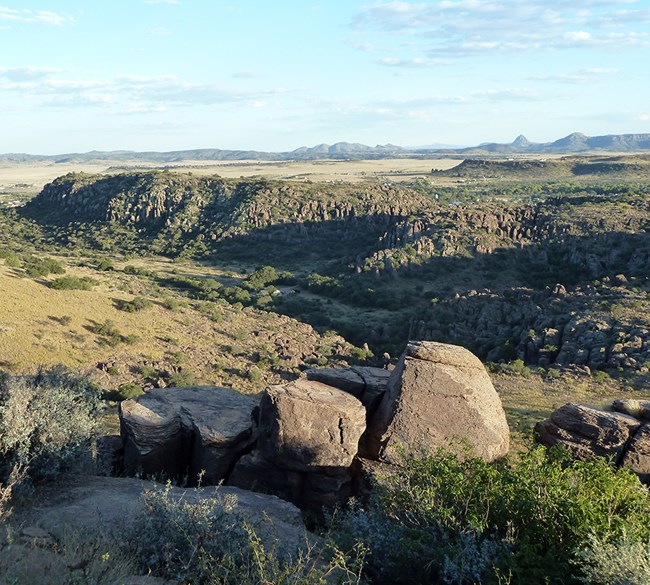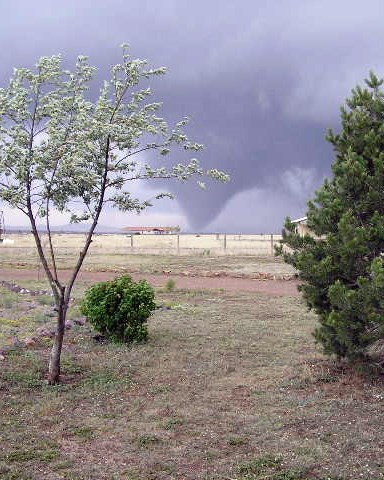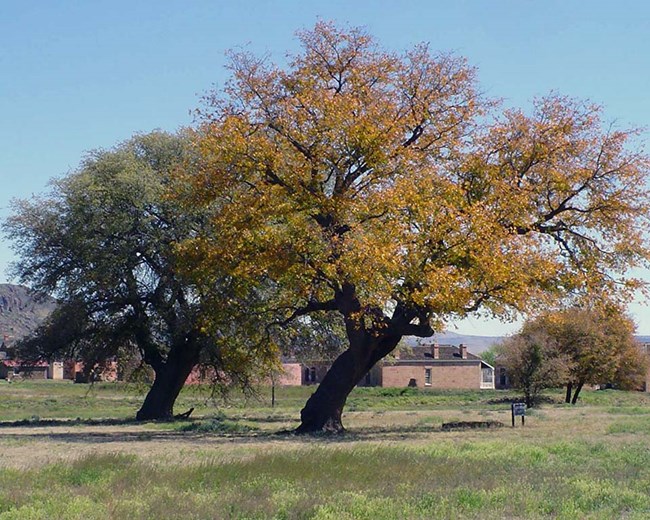Last updated: September 28, 2023
Article
Climate and Groundwater Monitoring at Fort Davis National Historic Site

NPS
Overview
Together, climate and hydrology shape ecosystem structure and function, particularly in arid and semi-arid ecosystems. Understanding changes in climate, groundwater, and surface water is key to assessing the condition of park biota—and often, cultural resources.
At Fort Davis National Historic Site (NHS), our Chihuahuan Desert Network scientists study how ecosystems may be changing by taking measurements of key resources or “vital signs” year after year, much as a doctor keeps track of a patient’s vital signs. This long-term ecological monitoring provides early warning of potential problems, allowing managers to mitigate them before they become worse. We monitor climate, weather, and groundwater among other vital signs at the park.
Groundwater conditions are closely related to climate conditions. Because they are better understood together, we report on climate in conjunction with groundwater. Reporting is by water year (WY), which begins in October of the previous calendar year and goes through September of the water year (e.g., WY2021 runs October 2020 through September 2021). Information is added to this page as it becomes available throughout the year.

NPS
Climate and Weather
There is often confusion over the terms, “weather” and “climate.” In short, weather describes instantaneous meteorological conditions (e.g., it's currently raining or snowing, it's a hot or frigid day). Climate reflects patterns of weather at a given place over longer periods of time (seasons to years). Climate is the primary driver of ecological processes on Earth. Climate and weather information provide context for understanding the status or condition of other park resources.
Methods
Since 1902, Fort Davis NHS operated a National Oceanic and Atmospheric Administration Cooperative Observer Program weather station (FORT DAVIS, TX #413262, Figure 1). This station provides a reliable, long-term climate dataset used for all analyses in this climate and water report. Data from this station are accessible through Climate Analyzer.

NPS
Recent Findings
Precipitation
Annual precipitation at the Fort Davis station in WY2021 was 16.84" (42.8 cm; Figure 2), 1.33" (3.4 cm) more than the 1991–2020 normal. This precipitation surplus relative to normal occurred primarily in the late spring and early summer (June–August). While December was wetter than normal, overall rainfall in the cool season (October–March) was less than half of normal. Extreme daily rainfall events (≥1.00"; 2.5 cm) occurred on five days, over twice the normal annual frequency. Extreme rainfall events occurred on June 27, 2021 (1.65"; 4.2 cm); June 29, 2021 (1.19"; 3.0 cm); July 2, 2021 (1.09"; 2.8 cm); July 3, 2021 (1.07"; 2.7 cm); and August 20, 2021 (1.42"; 3.6 cm). Park staff reported that these five events all caused flash flooding events in the ephemeral creek that flows from west to east through the park .
Air Temperature
Mean annual maximum air temperatures in WY2021 were 0.2°F (0.1°C) warmer than the normal 77.8°F (25.4°C), and mean annual minimum air temperatures were 0.6°F (0.3°C) cooler than the normal minimum of 47.7°F (8.7°C; normals are based on means from 1991–2020). Mean monthly maximum and minimum temperatures were variable relative to normal (Figure 2). Extremely hot temperatures (>95.0°F; 35.0°C) were recorded on 11 days in WY2021, less than half of the normal frequency (25.7 days). Extremely cold temperatures (<22°F; −5.6°C) occurred on 17 days, slightly less than the normal frequency (18.3 days).

Climateanalyzer.org
Drought
Reconnaissance drought index provides a measure of drought severity and extent relative to the long-term climate. It is based on the ratio of average precipitation to average potential evapotranspiration (water loss due to evaporation and plant transpiration if water supply is not limited) over short periods of time (seasons to years). The reconnaissance drought index for Fort Davis NHS indicates WY2021 was a slightly wetter year from the perspective of both precipitation and evapotranspiration (Figure 3).

Climateanalyzer.org

NPS
Groundwater
Groundwater is one of the most critical natural resources of the American Southwest, providing drinking water, irrigating crops, and sustaining rivers, streams, and springs throughout the region.
MethodsFort Davis NHS groundwater is monitored using two wells near the park (Figure 1). Each well is monitored annually by the Texas Water Development Board (TWDB) and the data are available at the Texas Water Development Board Groundwater Database.
Recent Findings
Groundwater near Fort Davis NHS was not monitored by TWDB in WY2021 due to Covid-19 disruptions to fieldwork. The most recent results are from February 17, 2020. Groundwater levels in the two monitored wells increased slightly between WY2019 and WY2020 (Figure 4 and Table 1). Water level in well 52-25-309 appears to be driven by precipitation and has varied 11.36 ft (3.46 m) over the monitoring record (Figure 4). Groundwater at well 52-25-308 has been stable and shallow, varying only by 4.01 ft. This well does not appear to be strongly influenced by precipitation. Its proximity to Limpia Creek likely buffers the well from the larger water level fluctuations observed at 52-25-309.

NPS
| State Well Number | Location | Wellhead Elevation (ft amsl) |
Depth to Water (ft bgs) |
Water Level Elevation (ft amsl) |
Change in Elevation from Water Year 2019 (± ft) |
Elevation Difference from Earliest Measurement in Water Year 1967 (± ft) |
|---|---|---|---|---|---|---|
| 52-25-308 | 1,100 feet northeast of the park adjacent to Limpia Creek | 4827 | 11.70 | 4,815.30 | +0.77 | −1.30 |
| 52-25-309 | 144 feet east of the park | 4860 | 33.13 | 4,826.87 | +0.17 | −5.03 |
